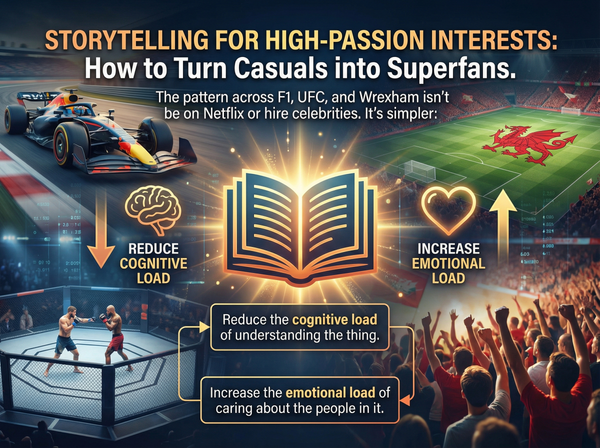7 Proven Referral Strategies That Actually Work

Every marketer knows that word-of-mouth is the holy grail. A personal recommendation from a friend or family member is more powerful than any ad campaign you could ever run—studies show referral customers have a 37% higher retention rate and spend 200% more than other customers. But how do you get your customers to actively become your brand's biggest cheerleaders?
The answer lies in well-designed referral programs. Instead of waiting for word-of-mouth to happen organically, you can create systems that incentivize your users to invite their friends. Here are seven battle-tested strategies that turn satisfied customers into growth engines.
1. The Give & Get Classic: Double the Incentive, Double the Results
This is the most common and effective referral model for a reason—it works. Both the existing user and the new user receive a reward, creating a win-win that removes the friction of asking for a favor and builds a powerful, self-sustaining growth loop.
How it works: An existing customer shares a unique referral link or code. When their friend signs up and/or makes a purchase through that link, both parties get a reward. The key is making this reward meaningful enough to motivate action but sustainable for your business model.
Real-world success stories:
- Dropbox offered both parties 500MB of free storage, turning users into marketers at virtually no cost and helping them grow from 100,000 to 4 million users in just 15 months
- Airbnb provided travel credits to both referrer and new user when booking their first stay, directly tying rewards to their core business
- PayPal famously gave $10 to both parties in their early days, spending $60-70 million on referrals but acquiring millions of users
Why it works: The mutual benefit creates powerful dual motivation. The new user isn't just helping a friend—they're getting genuine value. This dramatically increases conversion rates because both parties are invested in the outcome.
2. The Surprise & Delight Freebie: Create Shareable Wow Moments
Sometimes the best incentive isn't a discount but a tangible, high-value reward that feels like an unexpected gift. This strategy works especially well for brands with physical products where the reward itself becomes a conversation starter.
How it works: The referrer receives a special, high-perceived-value item or experience. The new user gets a different but equally valuable offer. This leverages the psychological power of receiving something unexpected and desirable.
Winning examples:
- Glossier gives referrers exclusive, full-size products before they hit the market, making customers feel like VIP insiders
- Morning Brew offers branded merchandise that subscribers actually want to use and display, turning customers into walking advertisements
Why it works: The reward feels exclusive and exciting rather than transactional. It creates a story users want to share, making referrals feel less like selling and more like sharing something cool with friends.
Implementation tip: Choose rewards that align with your brand identity and that recipients will proudly use or display. The goal is creating brand ambassadors, not just one-time referrers.
3. The Gamified Tier System: Turn Referrals Into an Achievement Game
Why stop at one reward? A tiered system encourages users to refer multiple people by offering increasingly valuable rewards at different milestones, transforming referrals into an engaging challenge.
How it works: Users earn progressively better rewards as they hit referral milestones:
- 1 referral = Small reward ($10 credit)
- 3 referrals = Medium reward (free product)
- 5+ referrals = Premium reward (year of free service, exclusive access)
Successful implementations:
- HelloFresh offers escalating rewards from $20 off to free boxes to premium kitchen tools
- Evernote created a points system where users could spend referral points on premium features or merchandise
- Zoom provides service upgrades and additional features based on referral volume
Advanced gamification elements:
- Progress bars showing users how close they are to the next reward
- Badges or status levels that provide social recognition within your community
- Limited-time challenges that create urgency and boost short-term referral activity
Why it works: It taps into our psychological need for achievement and progress. Users stay engaged longer because there's always a next level to reach. This extends the lifetime value of their advocacy.
Best practice: Make your first tier easily achievable (1-2 referrals) to build momentum, then space out higher tiers to maintain long-term engagement.
4. The Purpose-Driven Referral: Do Well by Doing Good
Modern consumers, especially Gen Z and millennials, are motivated by purpose beyond profit. This strategy channels their desire to make a positive impact while growing your business, creating powerful emotional incentives.
How it works: For every successful referral, your company contributes to a specific charity or cause. This can be combined with personal rewards, but the primary motivation is the charitable impact.
Impactful examples:
- TOMS built their entire business model around giving, including referral programs where each referral resulted in donated shoes
- Patagonia runs campaigns where referrals contribute to environmental causes, perfectly aligning with their brand values
- Warby Parker donates glasses to those in need based on purchases and referrals, with clear impact reporting
Execution strategies:
- Partner with well-known, credible charities to build trust
- Provide regular updates on total impact (trees planted, meals provided, etc.)
- Allow customers to choose from 2-3 aligned causes to increase personal connection
- Share individual impact (Your referrals have provided 15 meals!)
Why it works: It allows customers to feel they're contributing to something larger than themselves. This builds deep brand loyalty based on shared values, not just transactional benefits.
Strategy note: Ensure your chosen cause authentically aligns with your brand values—customers can spot inauthentic purpose marketing from miles away.
5. The VIP Community Approach: Create Exclusive Belonging
This strategy focuses on creating a sense of belonging and exclusivity. The reward isn't just a product but access to an exclusive community or experience that makes users feel special and connected.
How it works: Successful referrals grant both parties access to private forums, VIP communities, exclusive events, or beta features. This works particularly well for brands with passionate user bases or niche products where community drives value.
Community-building wins:
- Notion offers referrers and their friends early access to new features and direct communication with the product team
- Peloton creates exclusive groups and challenges for members who refer friends
- ConvertKit provides access to private creator forums and exclusive educational content
Community perks that work:
- Private Slack channels or Discord servers with founders/team members
- Monthly virtual meetups or AMAs with industry experts
- Early access to new products or features
- Exclusive educational content or masterclasses
- VIP customer support with faster response times
Why it works: In our increasingly digital world, people crave authentic connection. This strategy builds sticky communities that users don't want to leave. It creates powerful ownership and loyalty.
6. The Product Upgrade Strategy: Enhance the Experience
Instead of giving separate rewards, upgrade the referrer's existing service or product experience. This works especially well for subscription services, software, or tiered products.
How it works: Successful referrals unlock premium features, extended service periods, or enhanced versions of what the customer already uses.
Effective implementations:
- Spotify has offered premium upgrades for referrals in certain markets
- LinkedIn provides extended premium features for successful referrals
- Various meal kit services upgrade portion sizes or add premium ingredients
Upgrade options:
- Feature unlocks: Access to advanced tools or capabilities
- Capacity increases: More storage, users, or usage limits
- Service extensions: Additional months of service or extended warranties
- Priority access: Faster customer support, early feature access, or premium content
Why it works: It deepens engagement with your existing product rather than creating separate rewards to manage. Users experience more value from what they already love, increasing retention and satisfaction.
7. The Social Recognition Program: Leverage Status and Recognition
Some customers are motivated more by recognition and status than monetary rewards. This strategy leverages our fundamental need for social validation and peer recognition.
How it works: Successful referrers receive public recognition, special status, or social proof elements that showcase their influence and contribution to the community.
Recognition strategies:
- Ambassador programs: Top referrers become official brand ambassadors with special titles
- Leaderboards: Public rankings of top referrers
- Social shoutouts: Feature successful referrers on social media or newsletters
- Advisory roles: Top advocates get input on product development or company decisions
Real examples:
- Lululemon's ambassador program provides recognition, free products, and social status
- HubSpot recognizes top community contributors and referrers with special badges and features
- Salesforce has various community recognition programs that include referral achievements
Status symbols that work:
- Special badges or titles in online communities
- Featured customer stories or case studies
- Speaking opportunities at company events
- Direct access to leadership team
- Co-marketing opportunities
Why it works: For many users, especially in B2B contexts, recognition and professional status are more valuable than monetary rewards. This creates long-term brand advocates who are genuinely invested in your success.
Before You Launch: The Make-or-Break Implementation Details
No matter which strategy you choose, success depends on getting these fundamentals right:
Make It Frictionless
The referral process must be dead simple. One-click sharing with pre-populated messages beats multi-step processes every time. Provide:
- Pre-written social media posts with your referral link embedded
- Email templates users can customize and send
- Mobile-optimized sharing for on-the-go referrals
- Multiple sharing channels (email, SMS, social media, messaging apps)
Communicate Value Clearly
Use specific, compelling language to highlight what both parties receive. Get $25, Give $25 is clearer than Earn rewards for referrals. Include:
- Visual mockups of rewards or experiences
- Clear timelines for when rewards are delivered
- Simple terms without confusing fine print
- Success stories from other referrers
Promote Strategically
Feature your referral program prominently across all touchpoints:
- Website header or footer with eye-catching design
- Post-purchase confirmation pages when satisfaction is highest
- Email signatures and dedicated newsletter sections
- In-app notifications after positive user actions
- Social media bios and regular posts
- Customer service interactions as natural conversation starters
Track and Optimize Relentlessly
Monitor these key metrics:
- Referral rate: Percentage of customers who make referrals (aim for 2-5%)
- Conversion rate: Percentage of referred prospects who become customers (typically 2-3x higher than other channels)
- Program ROI: Revenue from referred customers vs. program costs
- Time to conversion: How long referred users take to make their first purchase
- Lifetime value: Compare referred customers to other acquisition channels
Use this data to continuously refine your offers, messaging, and process.
Set Clear Expectations
Define exactly when and how rewards are delivered. Include:
- Qualification criteria for successful referrals
- Reward delivery timelines (immediate vs. after trial period)
- Terms and limitations explained in plain English
- Contact information for program questions or issues
The Bottom Line
A well-designed referral program doesn't just grow your customer base—it builds an army of brand advocates who market for you because they genuinely want to share something valuable with people they care about.
The most successful programs combine multiple strategies: start with a solid Give & Get foundation, add gamification elements to encourage repeat referrals, and layer in community or recognition elements for your most engaged advocates.
The best referral program is one that feels authentic to your brand and genuinely valuable to your customers. Don't just copy what others are doing—adapt these strategies to fit your unique value proposition and customer motivations.
Keep Crushing!
- Sales Guy

